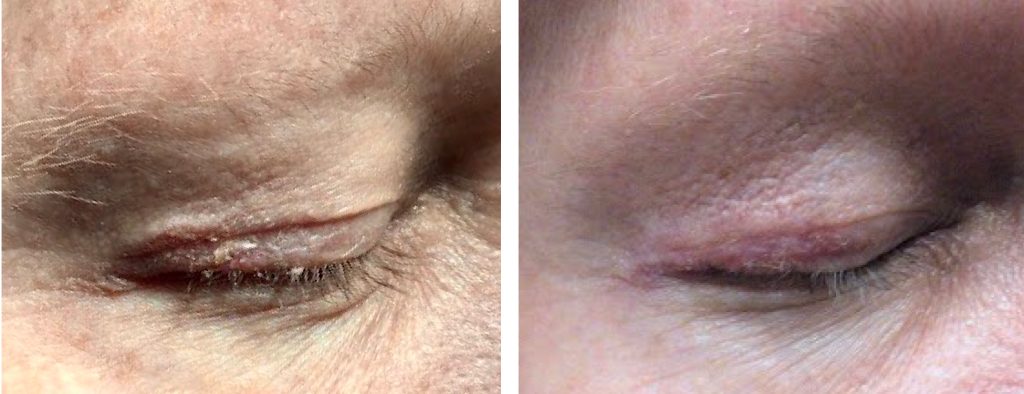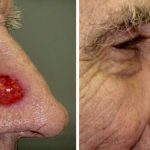Managing Eyelid Skin Cancer
HISTORY
A 53-year-old man presented with an approximately 10-year history of right upper eyelid “psoriasis.” He was treated with alclometasone dipropionate 0.05% ointment which helped with redness but flaking was still present. Trial of Protopic 0.1% ointment on 1/23/20 with minimal relief. Punch biopsy of the right upper eyelid on 5/19/21 showed inflamed AK. Area treated twice with LN2 on 5/26/21 and 6/9/21 with improvement but residual disease at eyelid margin. Consideration for topical 5-FU vs additional biopsies.
DISCUSSION
Topical 5-fluorouracil is a popular treatment for actinic keratosis and squamous cell carcinoma in-situ. Fluorouracil is a pyrimidine antimetabolite that blocks the methylation of deoxyuridylic acid to thymidylic acid which inhibits DNA synthesis, prevents cell proliferation of fast growing cells, and causes cell death in malignancy. A usual treatment course involves daily or twice daily application to the affected area for two to twelve weeks. The site of the cutaneous carcinoma and surrounding skin become red and inflamed which is an indicator that the area is responding to treatment. After finishing the treatment course, the skin normalizes and the skin cancer should be clinically resolved.

Traditionally, topical 5-fluorouracil is prescribed as a 5% cream. However, the cream can be messy or irritating around the eyes and eyelashes. A helpful alternative is fluorouracil 1% eye drops. This solution formulation can be placed directly into the eye, along the lash line, or to the eyelid skin. It is safe and effective for ocular cancer treatment.

